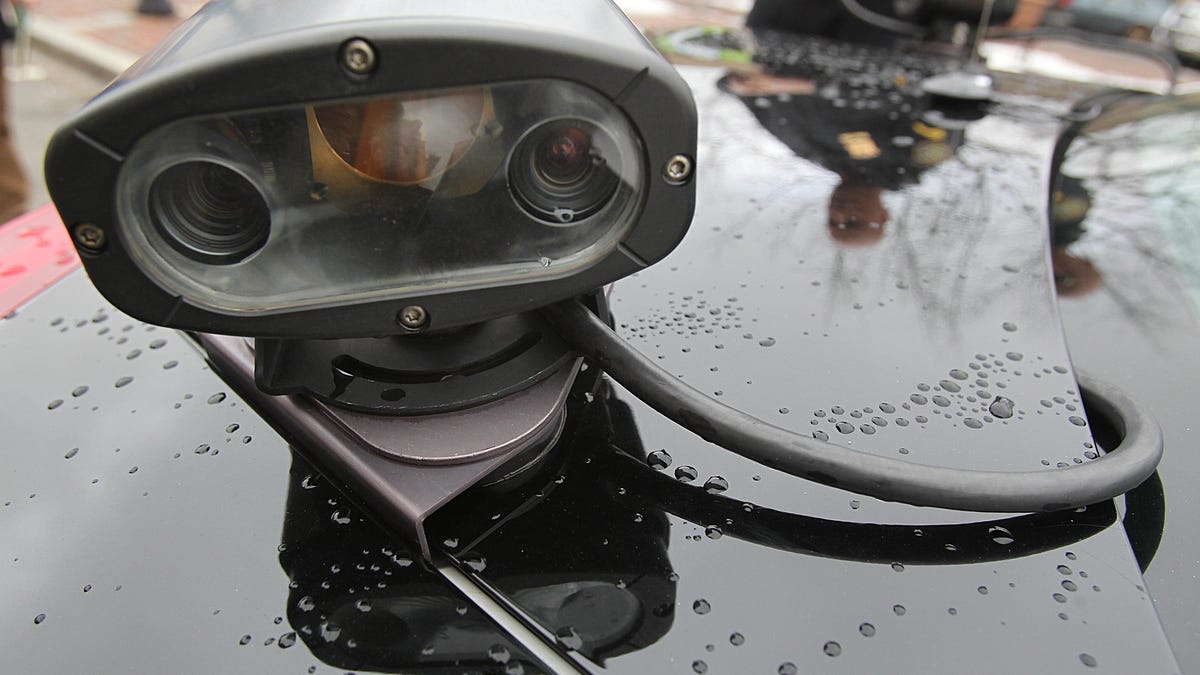ICE Uses Database That Tracks License Plates, Raising Privacy Concerns
Documents obtained by the ACLU show that more than 9,000 US immigration agents are using a database that draws info from license plate readers across the country.

ICE has access to a database containing billions of data points from license plate readers across the country, according to the ACLU.
US Immigration and Customs Enforcement has been using powerful technology to track where people are driving, documents released on Wednesday show.
The documents were obtained and released by the American Civil Liberties Union and show that more than 9,200 ICE employees have been using a database of info from automated license plate readers across the US.
Agencies like ICE are continuing to rely on surveillance technology, and a federal spending bill looks to provide $100 million to fund border surveillance tech. Companies like Amazon and Microsoft have also offered products such as facial recognition to ICE.
Such surveillance tools let ICE target people on a massive scale, and many advocacy groups consider them an invasion of privacy. Concerns about surveillance have grown as software shows it's capable of tracking people's every move, with or without their consent. In China, surveillance technology is being used to monitor citizens and assign social credit scores, which can lead to civil penalties.
The database used by ICE contains more than 5 billion points of location data, collected by license plate readers in parking lots, on roads, at toll booths and in police cars, the ACLU said. This data is collected on every license plate that passes a reader -- meaning innocent people traveling on their daily commutes have their movements captured and viewed by ICE on a regular basis.
An additional 1.5 billion license plate data points came from over 80 local police departments in dozens of states, the documents show. The ACLU said this mass surveillance violates local privacy laws.
"Storing that much location information is both a significant invasion of privacy and entirely unnecessary to find someone's current location," Vasudha Talla, staff attorney with the ACLU of Northern California, said in a post on Wednesday.
The database adds an additional 150 million to 200 million new license plate scans every month, according to documents the ACLU obtained. These automated license plate readers can photograph thousands of plates a minute.
The data comes from Vigilant Solutions, a company ICE started working with in 2018 with a $6.1 million contract set to expire in 2020. The company says it has license plate data from about 60 percent of the US population, from areas including Atlanta, Chicago, Cleveland, Los Angeles, New York, San Francisco, and Austin, Texas.
A key part of the data collection involved requesting information from local police departments. Vigilant's documents included a step-by-step guide on how to befriend officers and request location data from local police.
ICE has privacy rules that require all use of license plate data to be documented requests. But logs obtained by the ACLU show that these requests were often informal, provided through emails that work around the process.
ICE, for its part, said in a statement that it doesn't use the license plate data "to locate or track individuals who have no connection to ICE investigatory or enforcement activities."
Still, the ACLU is calling on local law enforcement to stop sharing people's information with ICE.
"It is appalling that ICE has added this mass surveillance database to its arsenal, and that local law enforcement agencies and private companies are aiding the agency in its surveillance efforts," Talla said in a statement.
Vigilant didn't immediately respond to a request for comment.
Originally published March 13, 10:42 a.m. PT.
Update, 3:15 p.m. PT: Adds comment from ICE.

